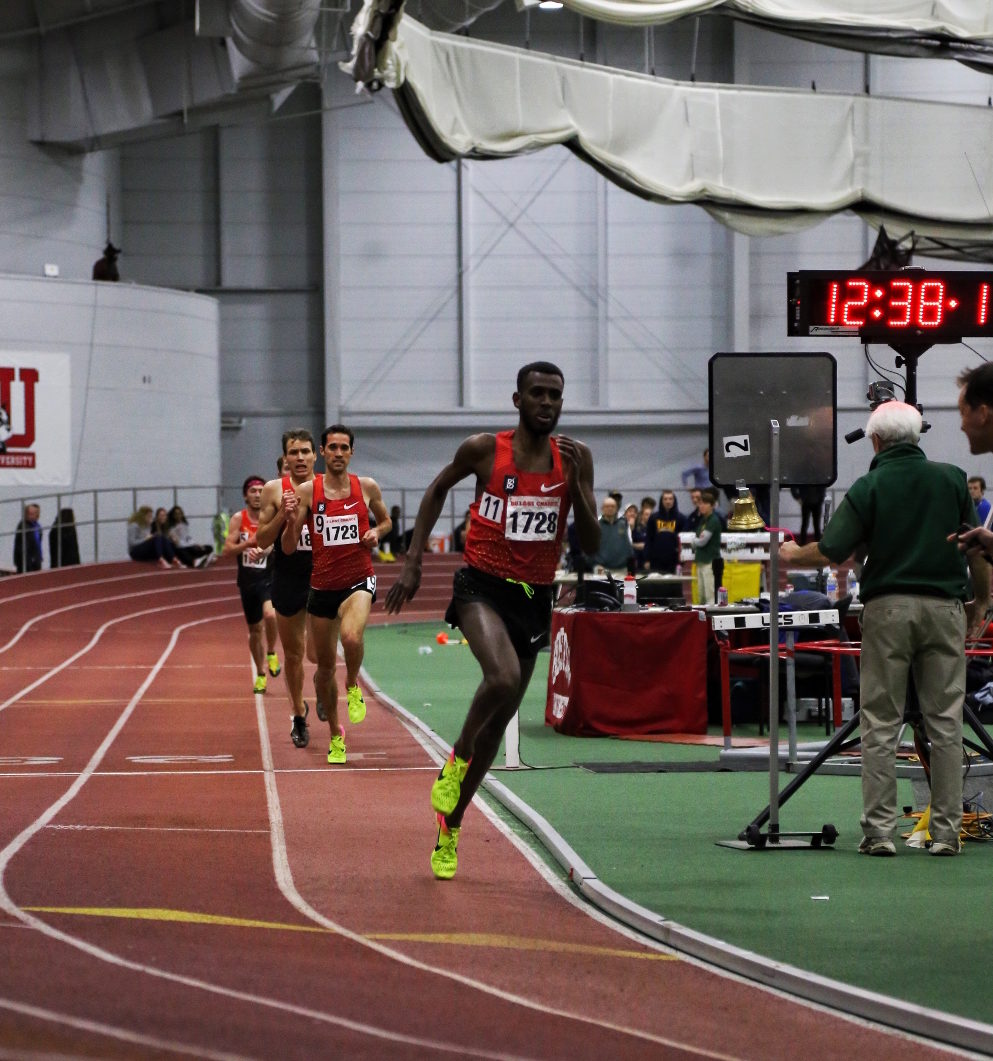Why indoor tracks are slower than outdoor
The more intimate setting of an indoor track features more, and tighter turns, among other differences in relation to an outdoor track


Winter is here and in most parts of Canada, outdoor track surfaces are caked in ice and blanketed in snow. As a result, those runners who hit the track are likely to head indoors away from the elements.
Running on an indoor track, often of 200 m lap length, is generally slower than an outdoor track, likely of 400 m distance. What gives? There’s no wind, rain or crazy temperatures indoors.
The reasons are rather simple: there are more, and tighter turns on a 200m track, and momentum is lost outwards to a certain extent when rounding the sharper corners. Some tracks, like at McGill University in Montreal, are banked, a feature of a track on which most records are set, while others, like at the University of Toronto or the University of Windsor, are not. Banked tracks, where the innermost lane is lower than the outermost lane, allow more momentum to be geared towards the centre of the track.
RELATED: Indoor track etiquette.
Look at the Canadian records. In the mile (1,609m), the indoor records are 3:54.32 and 4:27.02 for men and women while the outdoor records are 3:50.26 and 4:23.28, a four-second gap. But, over 3,000m, the indoor records are 7:40.11 and 8:48.56 while outdoors, they’re 7:40.49 and 8:32.17. (Notice the men’s indoor record is faster than the outdoor record, both held by Mohammed Ahmed in somewhat of an anomaly, so the general rule is not universal.) At 5,000m, the Canadian outdoor records are 13:01.74 and 14:54.98; indoors, the records are 13:04.60 and 15:25.15.
It’s tougher to compare indoor and outdoor sprint records as the indoor environment is limited to a 60m while the 100m is the shortest outdoor distance in athletics. Note that most indoor tracks are the distance they are because the surface needs to be built within a confined space. (A sports building that can fit a 400m track is rare. In fact, the Dome in Ottawa is one of only a few 400m indoor tracks in North America as is the Dome in Anchorage, Alaska. The Dome is a bubble in case you’re wondering.)
There could be other factors at play. For example, many runners focus their attention and peak fitness for the northern hemisphere’s summer months. Alternatively, some distances are offered more on the indoor circuit than on the outdoor circuit meaning more opportunities to contest distances. Indoor tracks are only offered in certain parts of North America as some climates allow for outdoor running year-round, like parts of British Columbia, for example. An area without an indoor track will not, understandably, host any indoor meets.
https://www.instagram.com/p/BRCAjAEAlux/
Also, an indoor track often has fewer than eight lanes versus a traditional outdoor track. A tighter space may mean more jostling, off of the start line for example, which means runners could lose rhythm and subsequently slow. To make matters worse, the air is often dry, which can result in track hack, a term coined for having a nasty feeling in your throat and cough.
That said, tighter corners and more compact racing conditions does make for more exciting action and crowds are often closer to the action because of their proximity to the close and far sides of the track. (Look at how close the crowd gets in CR‘s above video.)
Oversized tracks exist, like at the University of Washington’s Dempsey Indoor (307 m) in Seattle or the aforementioned Dome at Louis Riel (400 m) in Ottawa. Athletics Canada lists separate oversized marks in their annual rankings compared to tracks 200m or less. (Tracks shorter than 200m exist though they are relatively rare.) Oversized track marks, in facilities whose lap size exceed 200 m, are not eligible as indoor records, according to Athletics Canada rules and regulations.
The fact that indoor tracks are slower than outdoor surfaces has effects beyond just record-keeping and racing. For those working out indoors, adjusting expectations and time goals is an option as it may be slightly tougher to hit the desired splits that are more attainable outdoors. Reminding yourself that consistently running in the same direction, usually counterclockwise, may lead to overuse injury is also recommended.
Did you also know that there are a world championships for indoor events? Birmingham in the UK is hosting the 2018 IAAF World Indoor Championships March 2-4.


